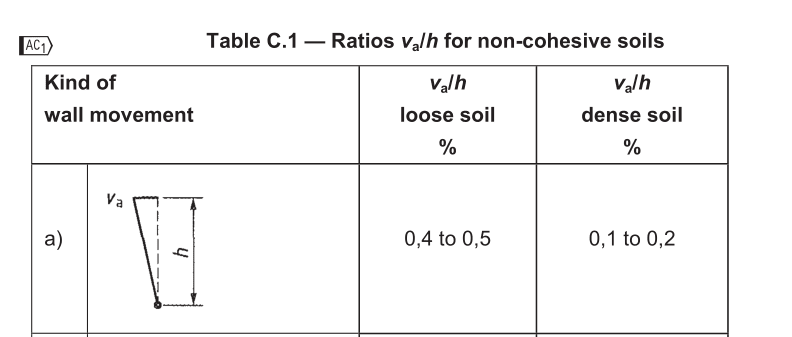Does anyone have experience with allowable deflection of retaining walls.
Online research suggests one of the following: H/100, between H/200 to H/100, no criteria as it's a visual issue.
CRSI Design Handbook mentions H/240 without rotation at base, and neglecting creep which I assume at least doubles the immediate deflection. See attachment.
The other factor is the pressure distribution. Rankine pressure increases as depth increases and net force is 1/3 from the bottom. Trial wedge methods seem to have a net force 2/3 from the base. There's actually more uncertainty with this assumption than the criteria for allowable deflection.
What are your thought on this.
Online research suggests one of the following: H/100, between H/200 to H/100, no criteria as it's a visual issue.
CRSI Design Handbook mentions H/240 without rotation at base, and neglecting creep which I assume at least doubles the immediate deflection. See attachment.
The other factor is the pressure distribution. Rankine pressure increases as depth increases and net force is 1/3 from the bottom. Trial wedge methods seem to have a net force 2/3 from the base. There's actually more uncertainty with this assumption than the criteria for allowable deflection.
What are your thought on this.

